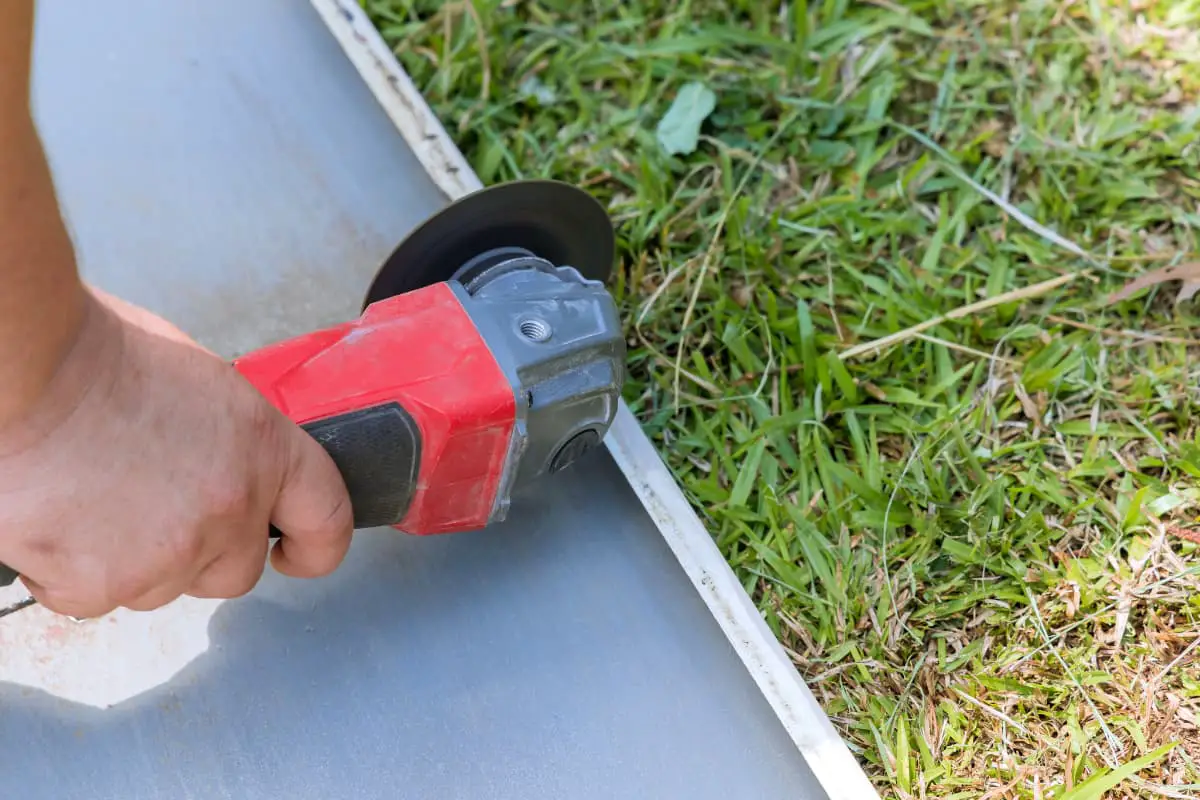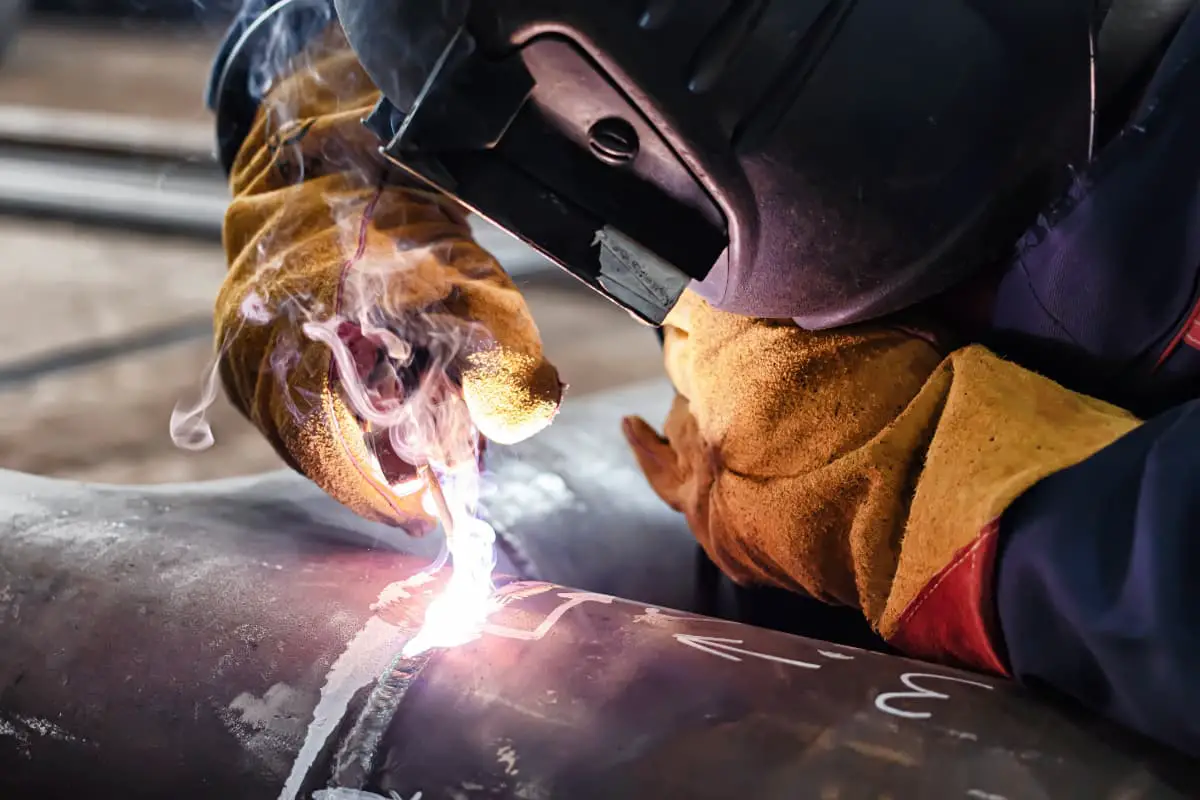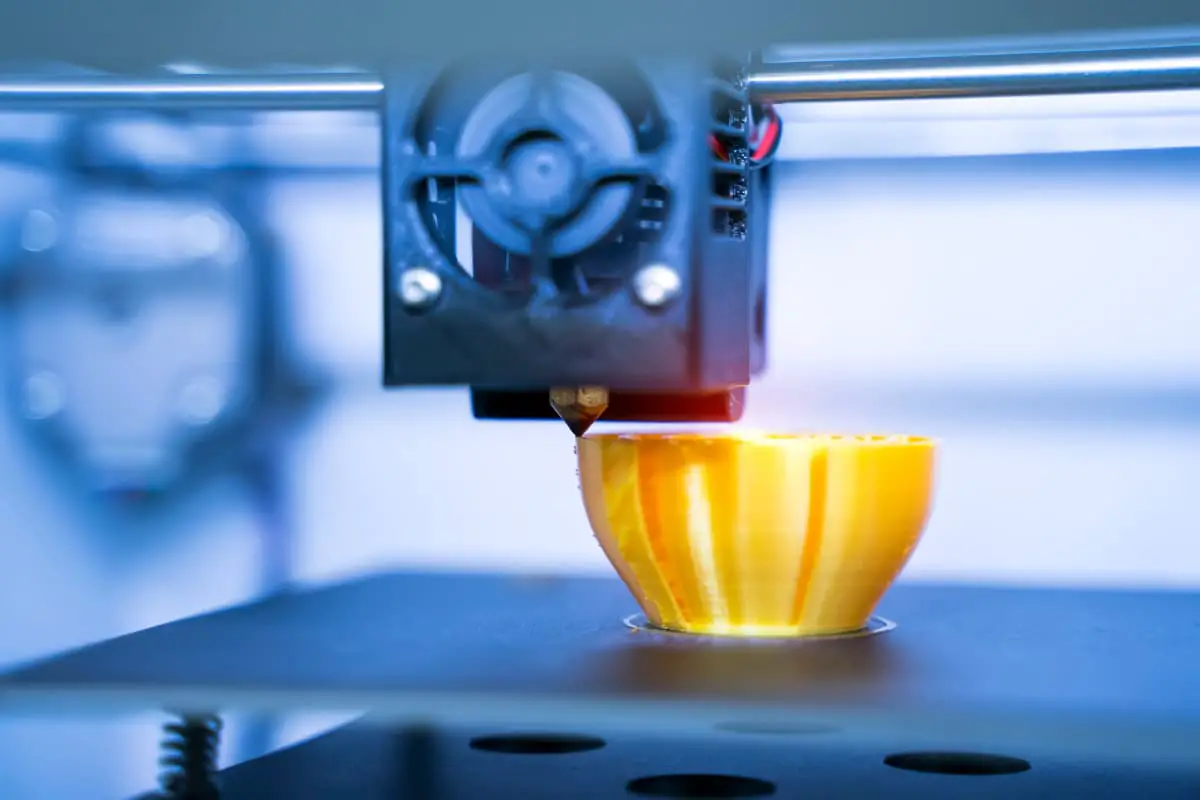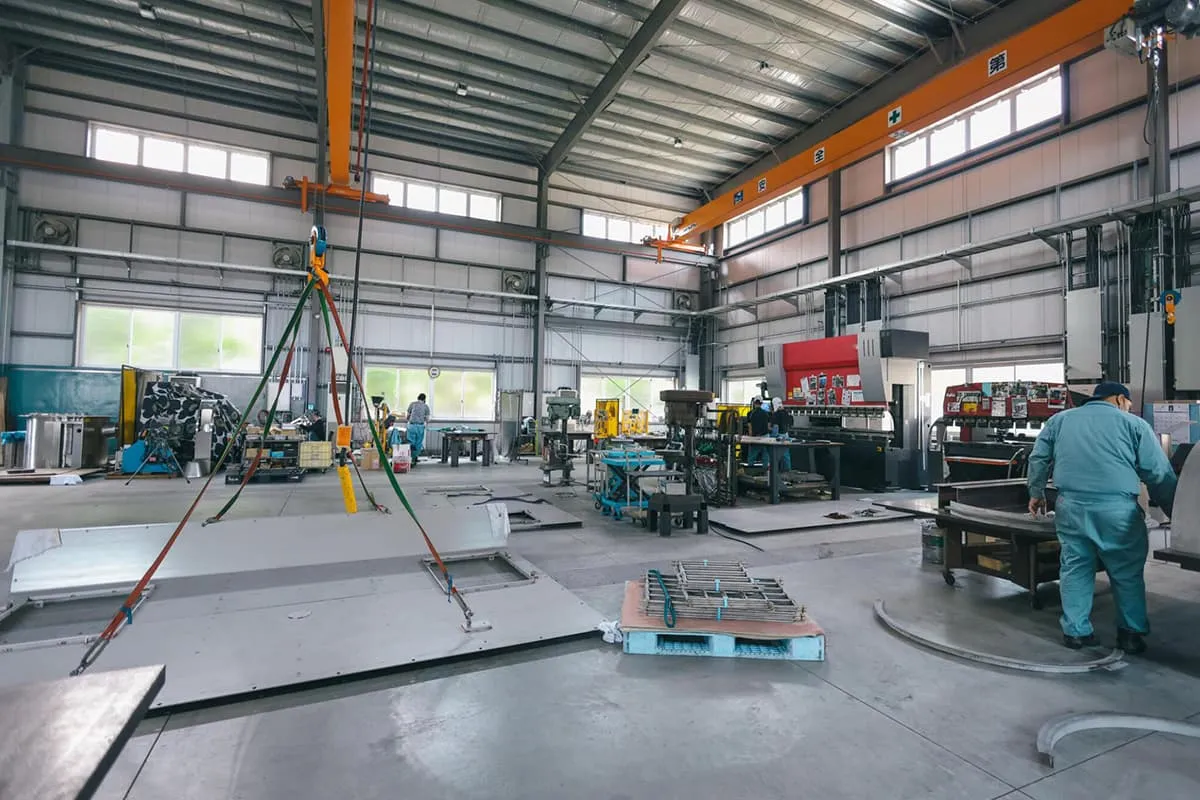
Laser welding processes, primarily for sheet metal welding, can be categorized based on the type of laser into either fiber continuous laser welding or YAG pulse laser welding. The principles of laser welding can be divided into conduction welding and deep penetration laser welding.
With a power density lower than 104~105 W/cm2, it’s considered conduction welding, characterized by shallow penetration and slow welding speed. When the power density exceeds 105~107 W/cm2, the metal surface heats up and dips into a “cavity,” creating deep penetration welding, known for its fast welding speed and high depth-to-width ratio.
The principle of conduction type laser welding involves laser radiation heating the surface to be processed. The surface heat diffuses inward through thermal conduction. By controlling laser parameters such as pulse width, energy, peak power, and repetition rate, the workpiece melts, forming a specific melt pool, making it suitable for welding thin plates.
Laser welding machines used for gear welding and metallurgical thin plate welding mainly involve deep penetration laser welding.
Table 1 Handheld Laser Welding Thickness & Speed Chart
| Laser | CW | Power | 3000W | Handheld Gun: Collimation/Focusing F60/F150 | |||||
| Core Diameter | 50um | Shielding Gas | Nitrogen/Air | Gas Flow Rate | 8-10L/min | ||||
| Sheet Material | Thickness (mm) | Power (W) | Duty Cycle (%) | Frequency (Hz) | Focus (mm) | Swing Amplitude | Swing Frequency | Wire Feeding Speed/Wire Diameter | Melting Depth (mm) |
| Stainless Steel | 1 | 600 | 100 | 2000 | -1.5 | 2 | 100 | 15mm/s, wire 0.8mm | 1 |
| 1.5 | 800 | 100 | 2000 | -2 | 2 | 100 | 13mm/s, wire 1.0mm | 1.5 | |
| 2 | 1000 | 100 | 2000 | -2 | 2 | 80 | 12mm/s, wire 1.0mm | 2 | |
| 3 | 1500 | 100 | 2000 | -2 | 3 | 80 | 10mm/s, wire 1.2mm | 2.5 | |
| 4 | 2000 | 100 | 2000 | -3 | 3 | 60 | 7mm/s, wire 1.2mm | 3 | |
| 5 | 2800 | 100 | 2000 | -3 | 3 | 50 | 5mm/s, wire 1.6mm | 3.5 | |
| Carbon Steel | 1 | 600 | 100 | 2000 | 0 | 2 | 100 | 15mm/s, wire 0.8mm | 1 |
| 2 | 1000 | 100 | 2000 | 0 | 2 | 100 | 15mm/s, wire 1.0mm | 2 | |
| 3 | 1500 | 100 | 2000 | 0 | 2.5 | 100 | 15mm/s, wire 1.2mm | 2.5 | |
| 4 | 2000 | 100 | 2000 | 0 | 3 | 80 | 13mm/s, wire 1.2mm | 3 | |
| 5 | 2500 | 100 | 2000 | 1 | 3 | 60 | 13mm/s, wire 1.6mm | 3.5 | |
| 6 | 3000 | 100 | 2000 | 2 | 3 | 60 | 10mm/s, wire 1.6mm | 4 | |
| Aluminum Alloy (Series 5) | 1 | 500 | 100 | 1000 | 0 | 2 | 100 | 15mm/s, wire 1.0mm | 1 |
| 2 | 1000 | 100 | 1000 | 0 | 2.5 | 80 | 13mm/s, wire 1.2mm | 1.5 | |
| 3 | 1500 | 100 | 1000 | -1 | 2.5 | 70 | 12mm/s, wire 1.2mm | 2 | |
| 4 | 2000 | 100 | 1000 | -1 | 3 | 60 | 10mm/s, wire 1.6mm | 2.5 | |
| 5 | 2800 | 100 | 1000 | -2 | 3.5 | 60 | 7mm/s, wire 1.6mm | 3 | |
Principle of Deep Penetration Laser Welding
The principle of laser deep penetration welding involves using a continuous fiber laser beam to join materials. This metallurgical physical process is very similar to that of electron beam welding, where the energy conversion mechanism is accomplished through a “keyhole” structure.
Under the high power density of the laser, the material vaporizes and forms a keyhole. This vapor-filled keyhole acts like a black body, absorbing nearly all the incident beam energy, with the equilibrium temperature inside the cavity reaching about 2500°C.
Heat is transferred from the high-temperature cavity walls, melting the metal surrounding the cavity. The keyhole is filled with high-temperature steam generated by the continuous vaporization of the wall material under the laser, with molten metal surrounding the keyhole walls and solid material around the molten metal (unlike most conventional welding processes and laser conduction welding, where energy is first deposited on the surface of the workpiece and then transferred inward).
The flow of liquid outside the hole walls and the surface tension of the wall layer balance dynamically with the continuous steam pressure inside the cavity. The beam continuously enters the keyhole, the material outside the keyhole flows continuously, and as the beam moves, the keyhole remains in a stable flowing state.
That is, the keyhole and the molten metal surrounding the hole walls move forward at the speed of the leading beam, filling the void left by the moving keyhole with molten metal, which then solidifies, forming the weld. This entire process happens so quickly that welding speeds can easily reach several meters per minute.
Factors Affecting the Welding Speed of Laser Welding Machines
The Importance of Power Density
Power density is a core factor in determining the welding speed of laser welding machines. Higher power density can lead to faster welding because it means more energy is concentrated in the welding area, facilitating quicker melting and pool formation. Therefore, optimizing power density is an effective way to increase laser welding speed.
The Impact of Laser Beam Diameter on Welding Speed
The diameter of the laser beam is another critical consideration. Generally, a smaller laser beam diameter can provide higher power density, allowing for faster welding speeds. Adjusting the laser beam diameter to suit different materials and welding tasks is a key strategy for enhancing welding efficiency.
Differences in Material Type and Thickness
Different materials react differently to lasers, and the thickness of the material directly affects the welding speed. Some materials may be more easily heated by lasers, while thinner materials can usually be heated and welded more quickly. Therefore, when devising a welding plan, it’s crucial to consider both the type and thickness of the material to achieve optimal welding speeds.
Adjusting the Welding Speed Settings
Operators of laser welding machines can flexibly control the welding process by adjusting the welding speed. Increasing the welding speed typically means the laser welding machine moves further in a unit of time, achieving a higher welding speed. However, this requires operators to have a deep understanding of welding parameters to ensure the quality of welding is not compromised.
The Importance of Welding Gas and Atmospheric Conditions
Laser welding often requires the use of a shielding gas, such as argon, to prevent oxygen from entering the welding area and causing oxidation. The quality and composition of the atmospheric conditions also affect the welding speed. Maintaining the appropriate atmosphere is crucial for the stability and efficiency of laser welding.
Regulation of Laser Power and Wavelength
The power and wavelength of the laser are key factors affecting the welding speed. Higher laser power usually allows for faster welding speeds. Additionally, adjusting the laser’s wavelength can better adapt to the absorption characteristics of different materials, thus improving welding efficiency.
Selection of Welding Head Shape and Spot Configuration
The shape and configuration of the laser spot from the welding machine also significantly impact the welding speed. Different shapes and configurations may require different welding parameters, so choosing the appropriate welding head shape needs careful consideration of the specific welding requirements.
Adjustment of Welding Angle and Direction
The angle and direction of the welding head are also factors that affect the welding speed. Proper adjustment of the welding angle and direction can achieve a more uniform distribution of heat, improving the welding speed.
Application of Auxiliary Materials and Equipment
Using appropriate auxiliary materials and equipment, such as welding aids or auxiliary heating devices, can improve thermal conduction and pool formation during the welding process, thereby affecting the welding speed. The application of these auxiliary means in specific welding tasks can be an effective way to enhance efficiency.
Consideration of Weld Design
The design and geometric shape of the weld are important factors affecting the welding speed. Complex weld shapes may require longer welding times, so rational design of the weld before welding can optimize the welding speed.
Optimization of Laser Focal Length
The focal length of a laser welding machine, which is the distance from the focus to the surface of the workpiece, can optimize welding effects and increase welding speed. Correctly selecting the focal length is crucial for fully utilizing the performance of the laser welding machine.
The Impact of Workpiece Pre-treatment
The condition and pre-treatment of the workpiece surface directly impact the welding speed. A clean surface and appropriate pre-treatment can improve the absorption and transmission of laser energy, thereby affecting the welding speed.
The Necessity of Temperature Control
Environmental temperature and the initial temperature of the workpiece during the welding process are factors that need consideration. In some cases, cooling or heating measures may be required to maintain an appropriate temperature, thereby ensuring a balance between welding speed and quality.
Several factors influence the welding speed of laser welding machines, including power density, laser beam diameter, material type and thickness, as well as welding speed settings. By adjusting these parameters, operators can achieve better welding outcomes. Additionally, auxiliary materials, welding head shape, and optimization of laser focal length also play key roles in influencing welding speed. The collaborative effect of these factors provides greater flexibility for laser welding technology, driving the manufacturing industry towards an efficient and precise future.









